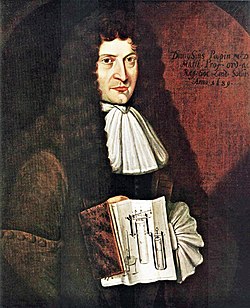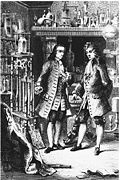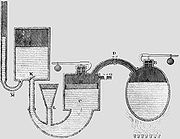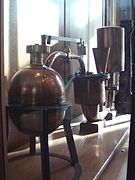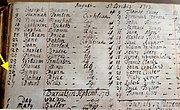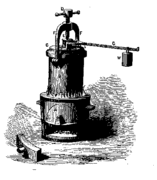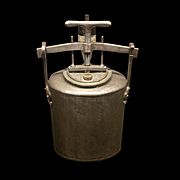Career
In 1673, Papin worked with Christiaan Huygens and Gottfried Leibniz in Paris, and became interested in using a vacuum to generate motive power.
In 1675, he first visited London, where he worked with Robert Boyle from 1676 to 1679, publishing an account of his work in Continuation of New Experiments (1680). During this period, Papin invented the steam digester, a type of pressure cooker with a safety valve. He first addressed the Royal Society in 1679 on the subject of his digester, and remained mostly in London. As a Huguenot, Papin found himself greatly affected by the increasing restrictions placed on Protestants by Louis XIV of France and by the King's ultimate revocation of the Edict of Nantes in 1685.
In Germany, he was able to live with fellow Huguenot exiles from France, so in about 1687, he left to take up an academic post in Germany.
In 1689, Papin suggested that a force pump or bellows could maintain the pressure and fresh air inside a diving bell. (Engineer John Smeaton utilised this design in 1789. )
While in Marburg in 1690, having observed the mechanical power of atmospheric pressure on his 'digester', Papin built a model of a piston steam engine, the first of its kind. In 1705 while teaching mathematics at the University of Marburg, he developed a second steam engine with the help of Gottfried Leibniz, based[citation needed] on an invention by Thomas Savery, but this used steam pressure rather than atmospheric pressure. Details of the engine were published in 1707.
In 1705, Papin constructed a ship powered by hand-cranked paddles. An apocryphal story originating in 1851 by Louis Figuire held that this ship was steam-powered rather than hand-powered and that it was therefore the first steam-powered vehicle of any kind. The myth was refuted as early as 1880 by Ernst Gerland [de], though still it finds credulous expression in some contemporary scholarly work.
Papin's ship was said to have been destroyed in 1707 by the boatmen of Munden who feared it would threaten their livelihood. The scene of boatmen destroying Papin's ship is depicted in several pieces of art in the eighteenth century and serves as an example of the resistance and fear inspired by the creative destruction that accompanies new technology.
Later,[when?] at the iron foundry in Veckerhagen (now Reinhardshagen), he cast the world's first steam cylinder.
In 1707, Papin returned to London leaving his wife in Germany. Several of his papers were put before the Royal Society between 1707 and 1712 without acknowledging or paying him, about which he complained bitterly. Papin's ideas included a description of his 1690 atmospheric steam engine, similar to that built and put into use by Thomas Newcomen in 1712, thought to be the year of Papin's death.
